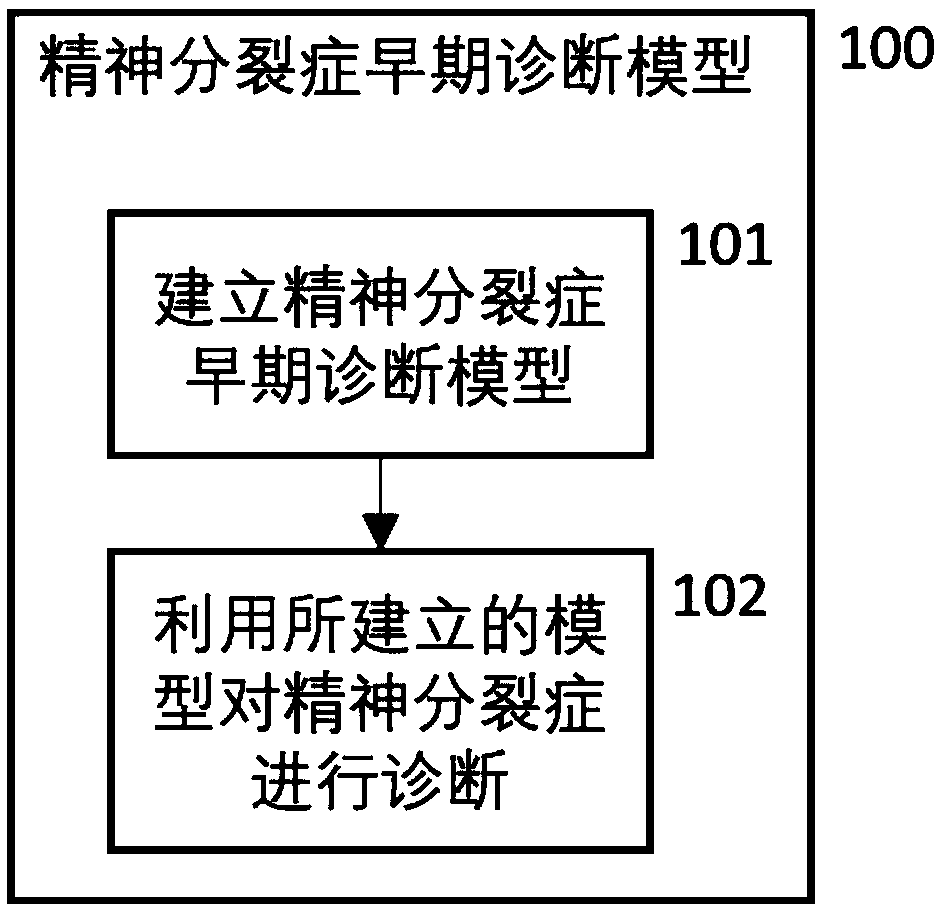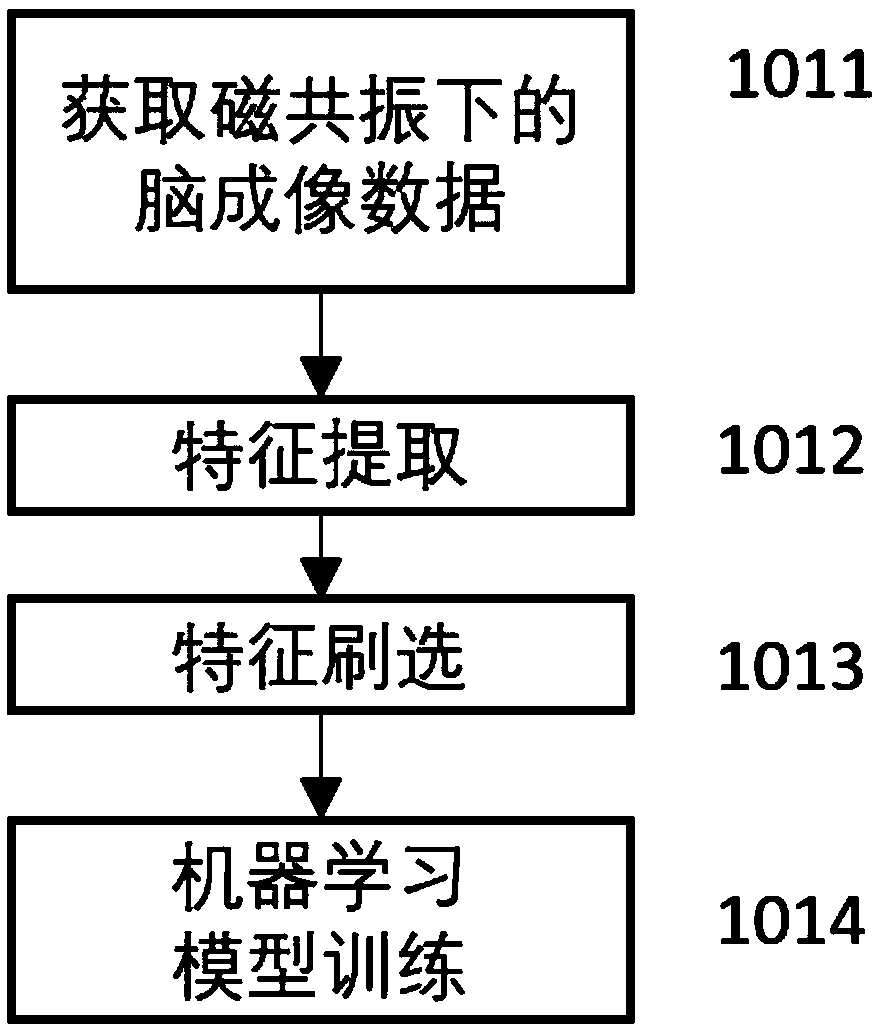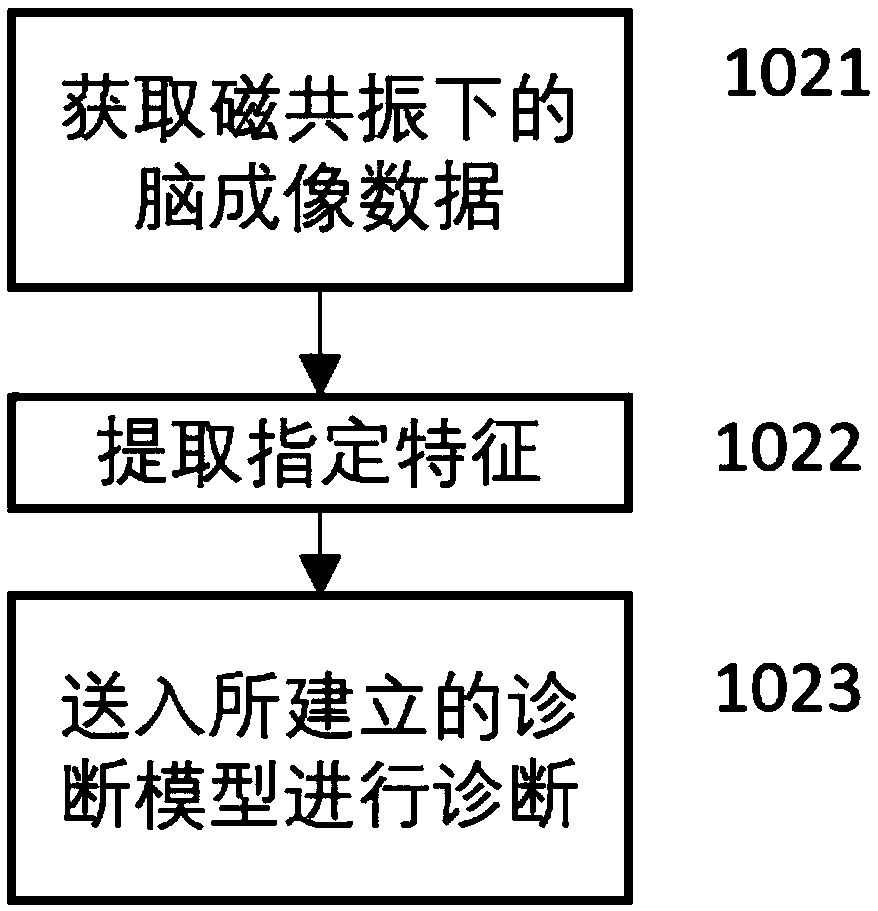Schizophrenia early diagnosis model based on face expression recognition magnetic resonance imaging and application thereof
A technology of schizophrenia and magnetic resonance imaging, applied in special data processing applications, instruments, electrical digital data processing, etc., can solve problems such as differences, achieve the effect of improving recognition and diagnosis rates, and reducing family and social burdens
- Summary
- Abstract
- Description
- Claims
- Application Information
AI Technical Summary
Problems solved by technology
Method used
Image
Examples
Embodiment 1
[0029] Embodiment 1 A kind of early diagnosis model of schizophrenia based on facial expression recognition magnetic resonance imaging
[0030] The present invention provides an early diagnosis model of schizophrenia based on magnetic resonance imaging of facial expression recognition, comprising: establishing an early diagnosis model of schizophrenia based on multimodal brain imaging data of magnetic resonance and using machine learning methods (101); and Diagnosis of schizophrenia using the established model (102), such as figure 1 .
[0031] Establishing the early diagnosis model of schizophrenia includes the following sub-steps ( figure 2 ): obtaining the brain imaging data under the magnetic resonance as the training data (1011) of the model; extracting features from the training data (1012); feature screening (1013); utilizing the extracted features and supervised machine learning methods to carry out model training (1014), thereby establishing the diagnosis model.
...
Embodiment 2
[0044] Embodiment 2 utilizes early diagnosis model to diagnose schizophrenia
[0045] Participants included 30 first-episode schizophrenic patients diagnosed by clinical mental hygiene physicians using the American Psychiatric Association Diagnostic and Statistical Manual: Mental Disorders (DSM-IV) and 30 healthy subjects. For each subject, brain structure images and functional images under the facial emotion processing task were collected. The magnetic resonance pulse sequence for collecting brain structural images is 3D FSPGR (fastspoiled gradient-echo, fast spoiled gradient echo) sequence, slice thickness = 1mm; the magnetic resonance pulse sequence for collecting brain functional images is EPI (echo planar imaging, echo planar imaging, Wave plane imaging) sequence, flip angle = 90°, repetition time (TR) = 2000ms, echo time (TE) = 30ms, slice thickness = 3mm.
[0046] In the emotional processing task, subjects viewed pictures of faces with happy, fearful, disgusted, and ne...
PUM
 Login to View More
Login to View More Abstract
Description
Claims
Application Information
 Login to View More
Login to View More - R&D
- Intellectual Property
- Life Sciences
- Materials
- Tech Scout
- Unparalleled Data Quality
- Higher Quality Content
- 60% Fewer Hallucinations
Browse by: Latest US Patents, China's latest patents, Technical Efficacy Thesaurus, Application Domain, Technology Topic, Popular Technical Reports.
© 2025 PatSnap. All rights reserved.Legal|Privacy policy|Modern Slavery Act Transparency Statement|Sitemap|About US| Contact US: help@patsnap.com



